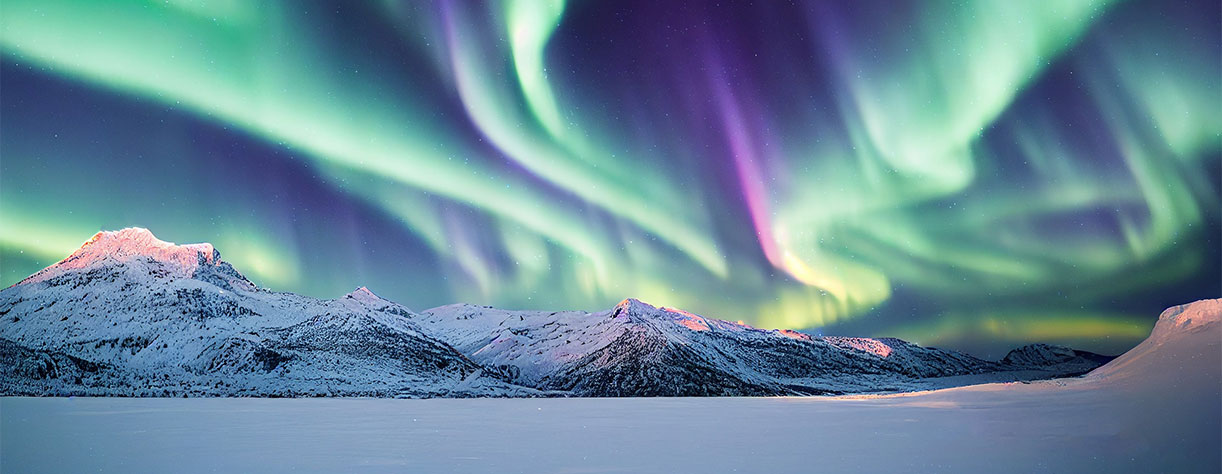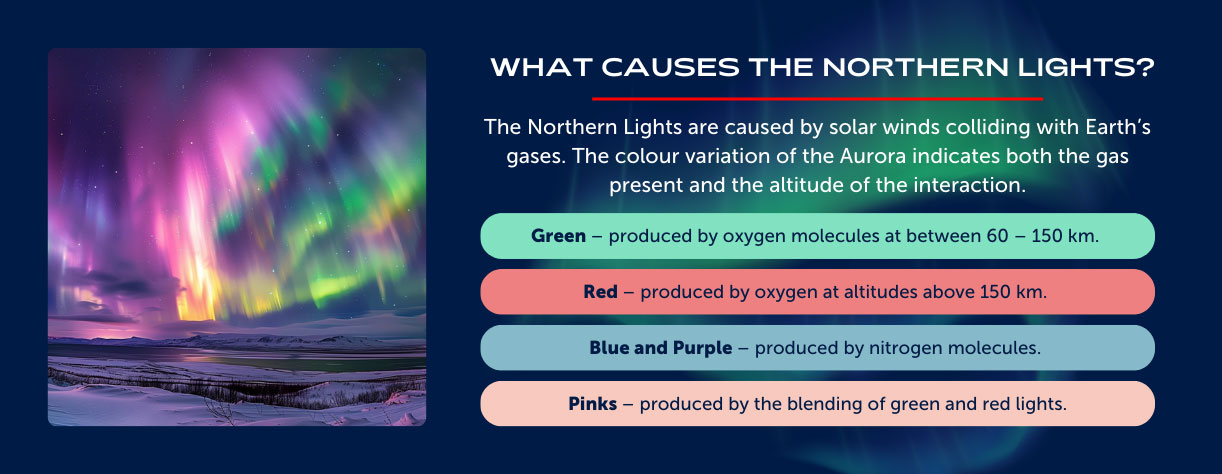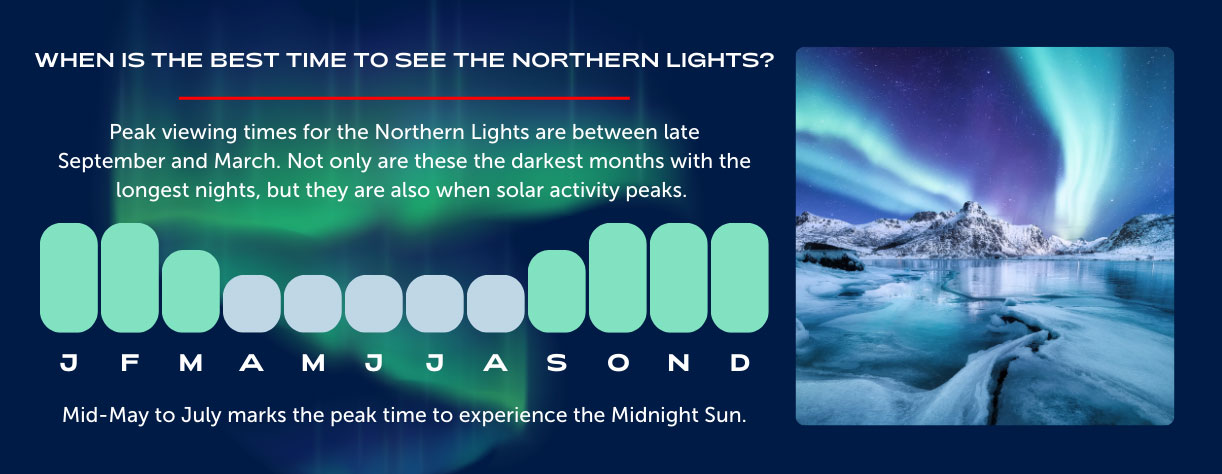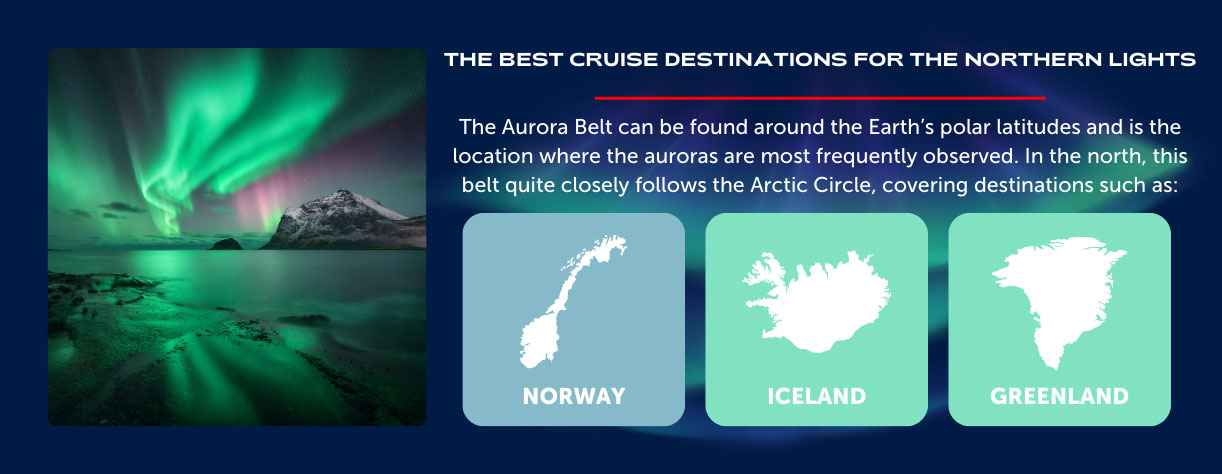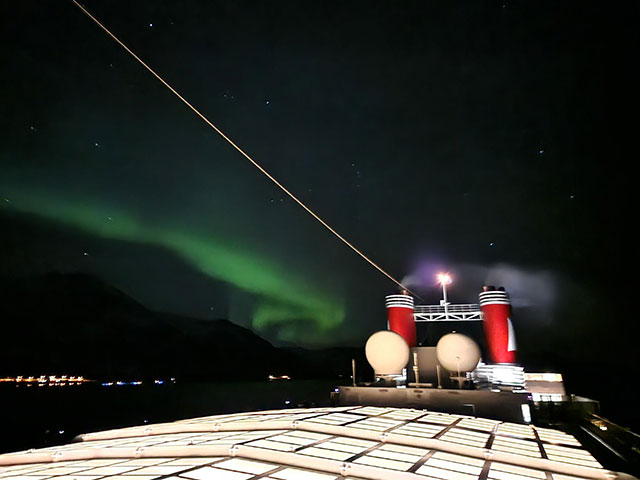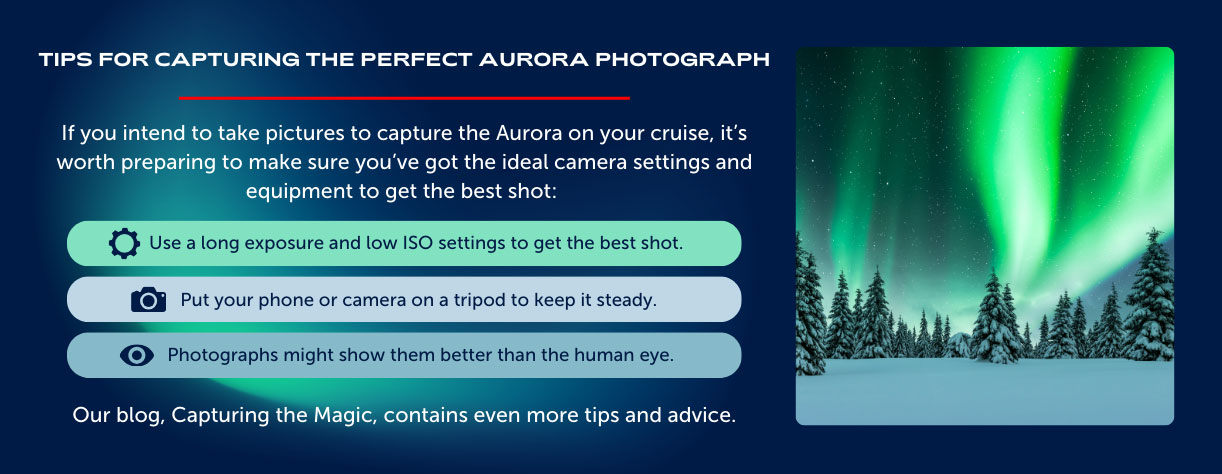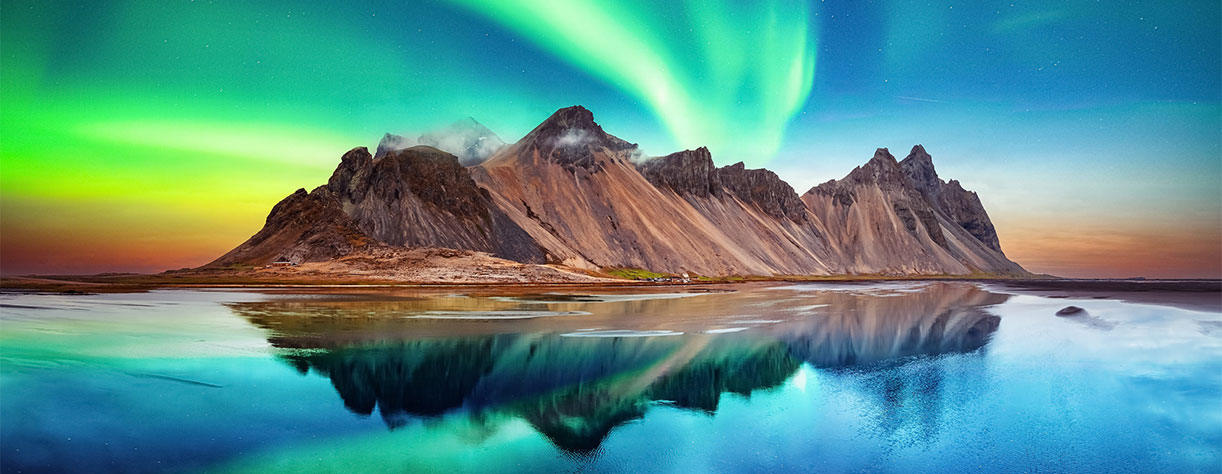The Northern Lights, or Aurora Borealis, are nature’s most mesmerising light show. With vibrant green, blue and pink ribbons shimmering across the polar night sky, for many people, it’s a bucket list item that needs to be seen to be properly admired and understood.
While the Northern Lights can be viewed from various locations – some in the UK have even seen them from their homes in recent years – a cruise offers an unparalleled vantage point for witnessing this extraordinary spectacle. Imagine gliding through Arctic waters, far from any light pollution, and enjoying an unobstructed view of the illuminated sky.
Are you ready to chase the Aurora’s magical embrace? Read on to discover more about the incredible light show, and explore our Northern Lights Cruises to embark on an unforgettable journey through the world’s most stunning polar regions.
Fun Facts about the Northern Lights
They’re named after a Roman goddess – Galileo coined the Aurora Borealis name, inspired by Aurora, the Roman goddess of the Dawn, and Boreas, the Greek god of the cold north wind.
There are also Southern Lights – the Southern Hemisphere also enjoys its own display, the Aurora Australis.
They make sound – auroral sounds (including cracking, popping, and a white noise similar to that on the radio), which are thought to be caused by the changes in electrification in the Earth’s atmosphere.
Other planets have their own auroras – Jupiter, Saturn, Mars, Venus and Mercury also have visible auroras. Neptune and Uranus also have them, but they aren’t visible to the naked eye.
They’ve been enchanting humans for over 2,500 years – the earliest records of the Aurora date back to the fourth century BC, when a “five-coloured light” was recorded in the Chinese Bamboo Annals.
They benefit humans – the Northern Lights show us that our Earth’s atmosphere is successfully protecting us from the Sun’s charged particles.
YOU MIGHT ALSO LIKE: Why You Need to See the Northern Lights
What Causes the Northern Lights?
The Aurora occurs due to complex solar activity. These lights result from charged particles from the sun’s solar wind colliding with gases in the Earth’s atmosphere. As these particles interact with oxygen and nitrogen, they create the mesmerising light display that we know as the Northern Lights.
But did you know you can tell which gas and at what altitude this interaction happens based on the colour variations you see?
- Green – produced by oxygen molecules at between 60 – 150 km. This is the most common colour variation.
- Red – produced by oxygen at altitudes above 150 km.
- Blue and Purple – produced by nitrogen molecules.
- Pinks – produced by the blending of green and red lights.
When is the Best Time to see the Northern Lights?
Peak viewing times for the Northern Lights are between late September and March. Not only are these the darkest months with the longest nights, but they are also when solar activity peaks. During the other months of the year, the Arctic region sees the Midnight Sun, another incredible Natural Phenomena.
We spoke to Ricky from Cruise To Travel. With over a decade of cruising experience, Ricky talked about the importance of choosing the right time of year to see the lights:
“Chasing the Northern Lights on a cruise has become an increasingly popular travel trend in recent years, drawing tourists from around the world who want to experience the natural wonder of the Aurora Borealis in an immersive way.
“With the unique natural wonder best seen from late September to March, with the peak of the aurora season between December and February - when the nights are longest, giving you more opportunities to see the lights - picking the right time is of most importance.”
The Best Cruise Destinations for the Northern Lights
The Aurora Belts can be found around the Earth’s polar latitudes – both the north pole and south pole –where the auroras are most frequently observed. Found approximately 10 – 20 degrees from the geomagnetic pole, these belts make up the auroral zone, which sees the most geomagnetic activity and is prime for viewing this natural phenomenon. In the north, this belt quite closely follows the Arctic Circle.
Laura Broxton, our Trade Marketing Manager, joined our In Search of the Northern Lights cruise in 2023 with her husband and recalled her experience: “Witnessing the elusive Northern Lights from the balcony of our cabin in the middle of the Arctic Ocean was an awe-inspiring moment and one we will never forget. We had also been husky sledding in Alta earlier that afternoon, so it was the perfect end to the perfect day.”
Those who ask, “can you see the Northern Lights from Norway?” will be happy to know that Norway offers an exceptional Northern Lights experience, and in Northern Norway, Tromsø is known as the “Northern Lights Capital”. The dramatic coastline here offers remarkable viewing opportunities, as many of our Norwegian Fjords cruises also align with peak viewing season.
Alternatively, Iceland and Greenland’s otherworldly and rugged geothermal landscapes contrast amazingly with the delicate beauty of the Aurora. Our Iceland cruises will allow you to enjoy this amazing outdoor paradise and will position you perfectly within the Aurora Belt, and our Greenland cruises unlock this often remote location.
Emyrs, from Cruise Hive, spent nearly ten years working aboard cruise ships and told us why he rates the lesser-visited Greenland as a destination:
“Booking a cruise to see the Northern Lights is more popular than ever! For me, Greenland would be a good option to take advantage of the stunning views, along with a true Nordic experience at calls such as Nanortalik and Qaqortoq. Just make sure you have a good camera that can capture those stunning night views.”
Tips for Capturing the Perfect Aurora Photograph
It’s only natural to want to capture pictures of the Northern Lights when you view them. If you intend to do so, it’s worth preparing to make sure you’ve got the ideal camera settings and equipment to get a fantastic photo:
- Use a long exposure and low ISO settings to get the best shot.
- Put your phone or camera on a tripod to keep it steady.
- Your photographs might show them better than the human eye.
If you’re looking for more tips for capturing the perfect Aurora photograph, read our guest blog by photographer and Fred. Olsen guest speaker Richard Lovelock; Capturing the Magic.
Experience the Aurora with Fred. Olsen
With Fred. Olsen, you’ll be able to search for the Northern Lights on our selection of specially timed and expertly curated itineraries. Our cruises from the UK depart from a range of ports, making starting your adventure even easier. Click below to discover our Aurora sailings or our Natural Phenomena itineraries, which also cover the stunning Midnight Sun.


